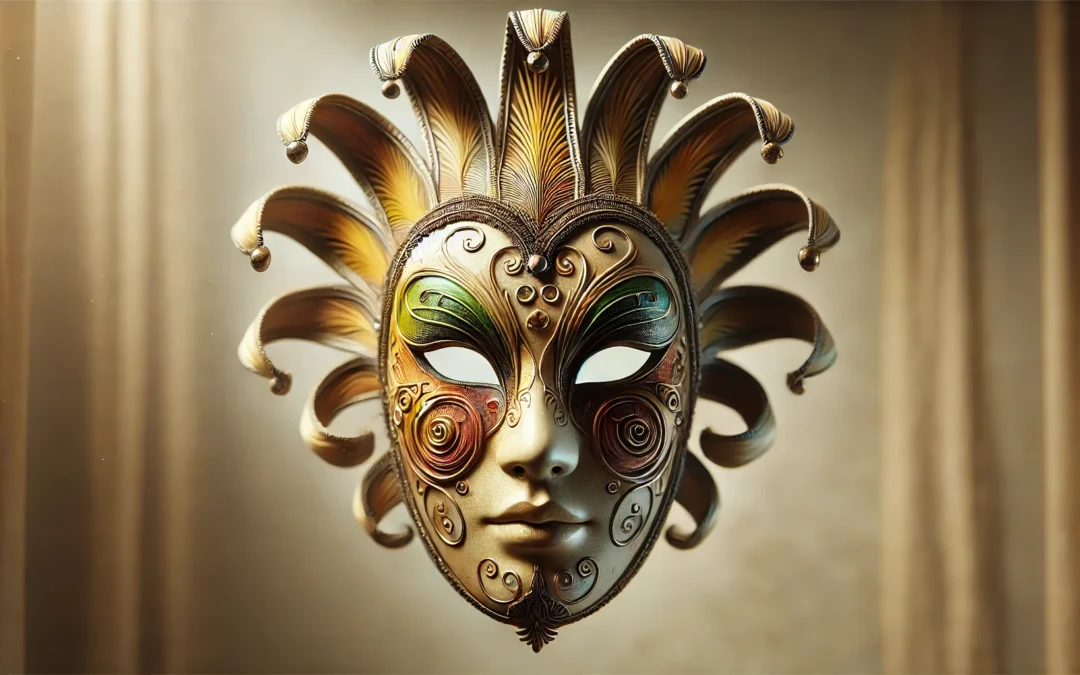Culture is the foundation of how people live, communicate, and shape their societies. From Western and Eastern cultures to internet culture, hip-hop, K-pop, gaming, and corporate culture, the world is full of diverse influences that define traditions, entertainment, work, and social life. Whether rooted in history or emerging in the digital age, cultures continue to evolve, shaping identities and global trends.
In this article, we’ll explore 50 of the most well-known and influential cultures in real life—from the dominant cultural movements that shape fashion, music, and technology to the social behaviors and belief systems that influence nations and communities. Whether it’s Hollywood’s impact on entertainment, Latin America’s rich artistic heritage, or the rise of digital and meme culture, these examples showcase how culture connects people worldwide.
What Is Culture?
Culture is the shared beliefs, customs, traditions, behaviors, values, and social practices that define a group of people, society, or civilization. It influences how people live, communicate, express themselves, and interact with the world around them. Culture can be seen in language, religion, art, music, food, fashion, festivals, technology, and everyday habits.
Culture is not static—it evolves over time due to historical events, globalization, and technological advancements. While some cultural traditions are deeply rooted in history, others emerge as new social movements and trends. From traditional customs (like the Japanese tea ceremony) to modern subcultures (like internet culture and digital nomad lifestyles), culture shapes individual identities and collective societies.
50 Examples of Popular Cultures
Culture takes many forms, shaping how people live, celebrate, and connect with each other. Some cultures are tied to specific regions, while others have spread globally, influencing millions. Below, we explore 50 examples of culture that highlight the rich diversity of human expression and tradition.
1. Western Culture
Western culture developed in Europe and later spread to North America and other parts of the world. It values individualism, freedom, and personal rights. Democracy, capitalism, and scientific progress are key pillars. Art, literature, and philosophy from ancient Greece and Rome continue to shape modern thought. Today, Western culture influences everything from movies and music to technology and global business.
2. Internet Culture
Internet culture is built on digital communities, memes, and social media trends. It shapes how people communicate, share ideas, and form identities. Viral content spreads in seconds, influencing fashion, politics, and humor worldwide. Online gaming, streaming, and virtual influencers are now part of daily life. This culture constantly evolves as new platforms and technologies emerge.
3. Work Culture
Work culture differs across countries and industries. In Japan, long hours and dedication define professional life. In Scandinavia, people prioritize work-life balance. In the U.S., career ambition and innovation drive success. Workplace values affect productivity, employee happiness, and business practices. Remote work and flexible schedules are now changing traditional office culture.
4. Minimalist Culture
Minimalism focuses on living with less and valuing what truly matters. It encourages decluttering homes, simplifying wardrobes, and avoiding unnecessary purchases. Many people turn to minimalism to reduce stress and improve mental clarity. The movement has influenced design, fashion, and lifestyle choices around the world.
5. K-Pop Culture
Originating in South Korea, K-Pop has become a worldwide music movement that influences fashion, entertainment, and digital culture. Groups like BTS, BLACKPINK, and EXO have built dedicated fan communities called “stans” who actively engage in streaming, voting, and social media trends. K-Pop’s impact extends beyond music into merchandising, K-dramas, and even Korean language learning. The industry is now a multi-billion-dollar sector, blending Asian culture with Western influences to dominate global charts.
6. Food Culture
Food culture reflects a country’s history, geography, and traditions. It shapes how people cook, eat, and celebrate. Italian cuisine is famous for pasta and pizza, while Japanese food highlights sushi and ramen. Street food in Asia and Latin America is a major part of daily life. Family meals, holiday feasts, and local markets all bring communities together through food.
7. Christian Culture
Christian culture is based on the beliefs and traditions of Christianity, the world’s largest religion. It has shaped holidays like Christmas and Easter, as well as moral values and laws in many countries. Churches, cathedrals, and religious art tell stories of faith and devotion. Christian music, literature, and symbols remain influential in both religious and secular life.
8. Digital Nomad Culture
Digital nomad culture is built around working remotely while traveling. Instead of being tied to an office, digital nomads use laptops and Wi-Fi to earn a living from anywhere. Popular destinations include Bali, Mexico, and Thailand, where affordable living and strong internet make remote work easier. This lifestyle appeals to freelancers, entrepreneurs, and professionals seeking freedom and flexibility.
9. Eastern Culture
Eastern culture includes traditions from China, Japan, India, and other Asian countries. It values family, respect for elders, and spiritual teachings like Buddhism, Confucianism, and Hinduism. Art, calligraphy, and traditional medicine have deep roots. Ancient practices like yoga, meditation, and tea ceremonies continue to influence daily life.
10. Sports Culture
Sports bring people together, creating lifelong passions and fierce rivalries. In Europe and South America, football (soccer) is almost a religion. The U.S. loves American football, basketball, and baseball. In India, cricket dominates. The Olympics unite nations, showcasing athletic excellence. Whether playing, watching, or cheering, sports culture builds identity and community.
11. Latin American Culture
Latin American culture is a fusion of Indigenous, African, and European traditions. Music and dance are at its heart, from the lively beats of salsa and reggaeton to the elegant movements of tango. Festivals like Carnival in Brazil and Día de los Muertos in Mexico highlight the region’s passion for celebration. Family ties are strong, and food plays a central role in gatherings. Traditions vary widely from country to country, but warmth and hospitality remain universal.
12. Hip-Hop Culture
Hip-hop began in the Bronx, New York, in the 1970s and quickly became a worldwide movement. It’s more than just rap music—it includes DJing, breakdancing, graffiti, and a unique style of fashion. The culture has given a voice to underrepresented communities and influenced mainstream entertainment, from movies to advertising. Today, hip-hop dominates music charts and continues to evolve with new sounds and styles.
13. Islamic Culture
Islamic culture is deeply rooted in faith and tradition. It influences daily life through prayers, fasting during Ramadan, and community gatherings. The Quran, Islamic art, and calligraphy hold great significance. Architecture, from the mosques of Istanbul to the palaces of Andalusia, showcases centuries of craftsmanship. Hospitality is a core value, and sharing meals, like breaking fast with dates and tea, is a cherished tradition.
14. Corporate Culture
Corporate culture shapes how businesses operate and how employees interact. Some companies emphasize hierarchy and formality, while others encourage creativity and open communication. In places like Silicon Valley, innovation and flexible work environments define success. In Japan, respect and teamwork are key values. The way people dress, work, and communicate in an office setting is often influenced by the culture of the company and country.
15. Academic Culture
Academic culture revolves around education, knowledge, and research. Universities are centers of learning where students and professors debate ideas, conduct studies, and push the boundaries of science. This culture values curiosity, discipline, and intellectual exchange. It influences not just schools but also industries like publishing, medicine, and technology. Academic conferences and research journals help spread new discoveries worldwide.
16. Middle Eastern Culture
Middle Eastern culture is known for its deep traditions, strong family values, and rich artistic heritage. Hospitality is essential—guests are often welcomed with tea, sweets, and warm conversation. The region has a long history of poetry, storytelling, and architecture, from the pyramids of Egypt to the souks of Morocco. Traditional music and dance, such as the hypnotic rhythms of the darbuka drum, bring communities together.
17. Fashion Culture
Fashion culture is about more than just clothing—it’s a form of self-expression and identity. It ranges from the elegance of Parisian haute couture to the street styles of New York and Tokyo. Trends change quickly, but classic styles and cultural influences remain strong. Fashion weeks, designer brands, and social media all play a role in shaping what people wear. For many, what they choose to wear reflects their personality and creativity.
18. Hindu Culture
Hindu culture is one of the world’s oldest, deeply connected to rituals, philosophy, and spirituality. Festivals like Diwali, the festival of lights, and Holi, the festival of colors, bring families and communities together in celebration. Temples, prayers, and ancient scriptures like the Bhagavad Gita shape religious life. Yoga and meditation, both rooted in Hindu philosophy, have gained popularity worldwide for their benefits to the mind and body.
19. Gaming Culture
Gaming culture spans from classic arcade games to massive online multiplayer communities. Video games are more than entertainment—they bring people together, create virtual worlds, and even shape careers in esports. Competitive gaming, streaming platforms, and fan conventions have turned video games into a billion-dollar industry. Whether playing on a console, PC, or mobile phone, gamers connect across countries and languages.
20. Buddhist Culture
Buddhist culture emphasizes mindfulness, peace, and spiritual growth. Found in countries like Thailand, Japan, and Tibet, it shapes daily life through meditation, temple visits, and acts of compassion. The teachings of the Buddha focus on self-awareness and finding balance. Monasteries, statues, and sacred texts preserve these traditions. Many outside Buddhist communities have embraced its teachings on meditation and inner peace.
21. African-American Culture
African-American culture has shaped music, literature, sports, and activism. From jazz and blues to hip-hop and R&B, its influence on global music is undeniable. Writers like Maya Angelou and James Baldwin gave voice to history and social struggles. The culture has also played a key role in civil rights movements, changing laws and inspiring generations. Family, faith, and resilience are at the heart of this rich and evolving cultural identity.
22. Anime & Manga Culture
Anime and manga are essential parts of Japanese pop culture, attracting fans worldwide. Anime refers to animated TV shows and films, while manga are comic books with detailed storytelling. Series like Naruto, Dragon Ball, and One Piece have passionate followings. Conventions, cosplay, and collectibles are all part of the experience. The storytelling, art, and emotional depth of anime and manga continue to shape entertainment across the globe.
23. Housewife Culture
Housewife culture celebrates the art of homemaking, nurturing families, and embracing traditional feminine roles that bring warmth and stability to many societies. Cooking, creating a cozy home, child-rearing, and skillfully managing a household are central to this lifestyle. In many cultures, it is seen as a very respected role, while in others, women balance it with careers. TV shows, blogs, and social media have created communities where housewives share recipes, parenting advice, and home organization tips.
24. Punk Culture
Punk culture started as a rebellion against mainstream society. It began with loud, fast music, often carrying anti-establishment messages. The fashion is just as bold—leather jackets, ripped jeans, and spiked hair are common. Punk is also about DIY ethics, where people make their own clothes, music, and art. Over the years, it has expanded beyond music into activism, underground publishing, and street art.
25. Mediterranean Culture
Mediterranean culture is a blend of influences from Europe, the Middle East, and North Africa. It reflects the history of ancient civilizations like Greece and Rome. Food plays a big role, with dishes featuring olive oil, seafood, and fresh vegetables. Family gatherings are central to social life, often lasting for hours over shared meals. The warm climate and coastal lifestyle shape everything from architecture to daily traditions.
26. Caribbean Culture
Caribbean culture is colorful, rhythmic, and deeply rooted in history. It combines Indigenous, African, and European traditions, creating unique music, dance, and cuisine. Reggae, calypso, and dancehall are just a few of the popular music styles. Carnival celebrations fill the streets with parades, costumes, and energy. The relaxed island lifestyle, love for storytelling, and deep sense of community make it one of the most vibrant cultures in the world.
27. Military Culture
Military culture is built on discipline, structure, and loyalty. It exists within armies, navies, and air forces around the world. Training is rigorous, and teamwork is essential. Respect for rank, traditions, and national pride is deeply ingrained. Even outside of active service, military culture influences daily life for veterans and their families. Symbols like uniforms, flags, and medals carry great significance.
28. Indigenous Cultures
Indigenous cultures belong to the native peoples of different regions, from Native Americans in North America to Aboriginal Australians and the Māori of New Zealand. These cultures often have deep spiritual beliefs connected to the land, ancestors, and traditions. Storytelling, music, and art are important ways of preserving history. While modernization has changed some aspects, many Indigenous communities continue to honor their customs and languages.
29. Vegan & Plant-Based Culture
Vegan and plant-based culture revolves around eating only plant-derived foods, avoiding meat, dairy, and animal products. Some choose this lifestyle for health, while others do it for ethical or religious reasons. Vegan food has become more mainstream, with restaurants, grocery stores, and chefs offering creative plant-based meals. Online communities, cookbooks, and documentaries have helped spread awareness and make veganism more accessible.
30. Polish Culture
Polish culture is shaped by a rich history, tradition, and a strong sense of identity. Family and hospitality are central—guests are warmly welcomed with homemade food, often accompanied by a toast of vodka. Traditional dishes like pierogi, kielbasa, and paczki (sweet doughnuts) are staples of Polish cuisine. Folk music and dance, especially the energetic polka and the elegant mazurka, are highlights of weddings and festivals. Poland’s Catholic heritage influences many customs, with grand celebrations of Christmas and Easter filled with age-old rituals.
31. South Asian Culture
South Asian culture is shaped by the traditions of India, Pakistan, Bangladesh, and Sri Lanka. Festivals like Diwali, Eid, Holi, and Pohela Boishakh bring people together in colorful celebrations. Family bonds are strong, and respect for elders is a core value. The region is famous for its diverse cuisines, with spices playing a key role in dishes like biryani, curry, and street foods. Classical music, dance forms like Bharatanatyam and Kathak, and storytelling traditions have influenced art worldwide.
32. Fandom & Geek Culture
Fandom and geek culture revolve around passionate communities that celebrate movies, books, comics, and video games. Fans gather at conventions, write fan fiction, and collect merchandise from franchises like Star Wars, Harry Potter, and Marvel. Cosplay—dressing as favorite characters—has become a major part of events like Comic-Con. Online forums, social media, and gaming platforms have created spaces where fans connect and share their enthusiasm.
33. Scandinavian Culture
Scandinavian culture is known for simplicity, practicality, and strong social values. Countries like Sweden, Norway, and Denmark emphasize equality and quality of life. The concept of “hygge” promotes coziness and comfort in everyday living. Traditional foods include pickled herring, meatballs, and open-faced sandwiches. Nordic design, with its clean lines and functionality, has influenced architecture and home decor worldwide.
34. Crypto (Degen) Culture
Crypto culture, often referred to as “degen” culture, is built around cryptocurrency, blockchain technology, and decentralized finance. It attracts risk-takers, traders, and tech enthusiasts who believe in financial independence outside traditional banking. The slang, memes, and online communities make it a unique subculture. While volatile, crypto has created new markets, from NFTs to decentralized applications, shaping the future of digital ownership.
35. Surf Culture
Surf culture is about more than riding waves—it’s a way of life. Found in coastal areas from California to Australia, it embraces freedom, adventure, and a deep connection to the ocean. Surf slang, laid-back attitudes, and beach fashion are all part of its identity. Music, from reggae to rock, has long been linked to the surf scene. Many surfers travel the world in search of the perfect wave, making this culture both local and global.
36. Persian Culture
Persian culture has a rich history spanning thousands of years, rooted in Iran’s art, poetry, and architecture. Classical poets like Rumi and Hafez remain widely read. Persian carpets, known for their intricate designs, are famous worldwide. Nowruz, the Persian New Year, marks the arrival of spring with traditional foods and family gatherings. Persian cuisine, featuring dishes like kebabs, saffron rice, and stews, is known for its deep flavors and aromas.
37. Hacker & Tech Culture
Hacker and tech culture is fueled by curiosity, problem-solving, and a love for coding. It includes ethical hackers, programmers, and cybersecurity experts who develop and test digital systems. Open-source projects and coding communities encourage collaboration. Silicon Valley embodies much of this culture, where startups, innovation, and breakthroughs in artificial intelligence and software development take center stage.
38. Bollywood Culture
Bollywood culture revolves around India’s massive film industry, which produces colorful, music-filled movies with dramatic storylines. Bollywood films mix romance, action, and comedy, often featuring elaborate dance sequences. The industry has a worldwide fan base, with stars like Shah Rukh Khan and Priyanka Chopra gaining international fame. Songs from Bollywood movies often become cultural anthems, played at weddings, parties, and festivals.
39. Space Exploration Culture
Space exploration culture is driven by a fascination with the universe and the pursuit of scientific progress. Astronauts, engineers, and researchers push the boundaries of human knowledge. Milestones like the moon landing, Mars rovers, and private space travel inspire generations. Space agencies like NASA and SpaceX play leading roles, and science fiction fuels public imagination about the possibilities of interplanetary life.
40. Slavic Culture
Slavic culture spans Eastern and Central Europe, including Russia, Poland, Ukraine, and the Balkans. It is deeply rooted in folk traditions, Orthodox Christianity, and storytelling. Music and dance, such as the lively Cossack performances, are an important part of celebrations. Traditional foods include dumplings, borscht, and hearty stews. Hospitality is a key value, with guests often greeted with bread and salt as a sign of respect.
41. Sikh Culture
Sikh culture is rooted in Punjab, India, and is shaped by the teachings of Guru Nanak and the Sikh Gurus. It emphasizes equality, community service, and devotion to one God. Sikhs follow the tradition of Seva (selfless service), which includes feeding people in free community kitchens called langars. The five articles of faith, including the turban and steel bracelet (kara), are symbols of discipline and commitment. Music and prayer play a big role in daily life, often heard in Gurdwaras (Sikh temples).
42. Opera and Classical Music Culture
Opera and classical music culture has influenced Western art and entertainment for centuries. Originating in Europe, it is known for powerful vocal performances, orchestras, and legendary composers like Mozart, Beethoven, and Verdi. Opera houses, such as La Scala in Milan and the Vienna State Opera, continue to host grand performances. Classical music also plays a key role in film scores, religious ceremonies, and national anthems.
43. Celtic Culture
Celtic culture traces its roots to ancient Ireland, Scotland, and Wales, where mythology, folklore, and oral traditions were passed down for generations. Gaelic languages, such as Irish and Scottish Gaelic, remain an important part of identity. Traditional Celtic music, featuring instruments like the bagpipes, harp, and tin whistle, is widely recognized. Symbols like the Celtic knot and festivals like Samhain (a precursor to Halloween) still influence modern culture.
44. Italian Culture
Italian culture is famous for its history, art, and food. The Renaissance, led by figures like Leonardo da Vinci and Michelangelo, changed the world’s view of art and science. Italian cuisine, with staples like pasta, pizza, and espresso, is enjoyed worldwide. Family is central to daily life, and social gatherings often revolve around meals. Italian fashion, sports (especially football), and cinema have also left a lasting mark on global culture.
45. Dystopian & Prepper Culture
Dystopian and prepper culture is based on survivalism, self-sufficiency, and preparing for uncertain futures. It is influenced by books and movies about dystopian societies, as well as real-world concerns about economic collapse, natural disasters, or political instability. Preppers focus on storing food, learning survival skills, and living off the grid. Some communities even practice bartering and alternative currencies as part of their preparedness mindset.
46. Backpacker Culture
Backpacker culture revolves around low-cost, independent travel. Backpackers often explore multiple countries with minimal luggage, choosing hostels, public transport, and street food to stretch their budgets. Popular backpacking routes include Southeast Asia, South America, and Europe. This culture values adventure, cultural exchange, and personal freedom. Many backpackers document their experiences through blogs, social media, and travel vlogs.
47. Jewish Diaspora Culture
Jewish diaspora culture connects Jewish communities around the world, beyond religious practices. It includes traditions, languages like Yiddish and Ladino, and contributions to literature, music, and business. Jewish humor, often known for its wit and self-reflection, has shaped comedy globally. Family and community remain central, with holidays like Hanukkah and Passover celebrated across different regions with unique customs.
48. Nomadic Cultures (e.g., Mongolian Culture)
Nomadic cultures have existed for centuries, adapting to different environments through movement and resourcefulness. Mongolian culture, for example, is centered around herding livestock and living in portable homes called gers (yurts). The Bedouins of the Middle East and the Tuareg people of North Africa follow similar traditions, relying on strong family ties and oral storytelling. Despite modernization, many nomadic traditions continue, blending old ways with new influences.
49. Cosplay & Convention Culture
Cosplay and convention culture brings fans together to celebrate movies, anime, comics, and video games. Cosplayers dress as their favorite characters, often creating detailed costumes and performing at events. Conventions like Comic-Con and Anime Expo draw thousands of attendees each year. This culture thrives on creativity, fan interactions, and a shared love for fictional worlds. Social media has helped expand its reach, making cosplay more accessible worldwide.
50. Traveler Culture
Traveler culture is built around exploring new places, meeting people, and experiencing different ways of life. Some travelers prefer luxury vacations, while others embrace long-term journeys, often working abroad or moving from place to place. Many follow traditions like collecting souvenirs, trying local cuisines, or keeping travel journals. Whether it’s for adventure, relaxation, or personal growth, the love of discovering new destinations unites travelers across the world.
Other Examples of Culture:
- Sustainability Culture
- Nordic Viking Culture
- Māori Culture (New Zealand)
- Romani Culture
- Maasai Culture (East Africa)
- Shinto Culture
- Sami Culture (Scandinavia)
- Native American Culture
- German Culture
- Brazilian Culture
Cultural Traditions and Practices Around the World
Culture shapes how people live, celebrate, and express themselves. Around the world, different societies have unique traditions that reflect their history, values, and way of life. From colorful festivals to artistic expressions, these practices connect generations and create a sense of identity. Below are some fascinating cultural traditions that highlight the diversity of human experiences.
Examples of Cultural Traditions and Practices
-
Japanese Tea Ceremony (Chanoyu) – A ritualized way of preparing and serving tea in Japan, emphasizing harmony, respect, and mindfulness.
-
Mexican Day of the Dead (Día de los Muertos) – A heartfelt celebration honoring deceased loved ones with altars, vibrant skull decorations, and community gatherings.
-
Chinese Calligraphy & Language – Calligraphy is more than just writing in China; it’s an artistic and historical tradition deeply embedded in cultural identity.
-
Hollywood & American Pop Culture – The global reach of U.S. movies, music, and media influences modern entertainment and lifestyle trends worldwide.
-
French Cuisine & Dining Etiquette – French food culture is known for its fine dining, cheese, wine, and the art of enjoying meals with elegance.
-
Scandinavian Hygge Lifestyle – This Danish and Norwegian concept centers on coziness, well-being, and enjoying simple pleasures in daily life.
-
Hawaiian Hula Dance & Aloha Spirit – A traditional Polynesian dance that conveys stories, emotions, and the welcoming spirit of the islands.
-
Irish Folklore & St. Patrick’s Day – Irish culture thrives through storytelling, Celtic mythology, and global St. Patrick’s Day festivities.
-
Russian Ballet & Performing Arts – Russia is home to world-renowned ballet companies like the Bolshoi and Mariinsky, showcasing its deep artistic heritage.
-
Turkish Bazaar & Street Markets – Istanbul’s Grand Bazaar and other markets reflect Turkey’s rich trade history, craftsmanship, and culinary traditions.
-
Spanish Flamenco Dance & Music – A passionate form of artistic expression rooted in Andalusian history, blending music, dance, and emotion.
-
Swiss Alps Yodeling & Mountain Traditions – Yodeling, cheese-making, and Alpine village customs reflect Switzerland’s deep mountain culture.
-
South African Ubuntu Philosophy – The belief in human interconnectedness and community support remains a core part of African cultural identity.
The Role of Culture in Shaping Identity
Culture is a fundamental component of individual and collective identity. It encompasses the shared values, customs, and traditions that define a group of people. These cultural elements influence how individuals perceive themselves and their place in the world. From language and religion to art and cuisine, culture provides a sense of belonging and continuity.
The role of culture in shaping identity begins early in life, as children learn cultural norms and values from their families and communities. These cultural teachings shape their worldview and influence their behavior and attitudes. As people grow, they continue to be influenced by the cultural environment around them, which can include media, education, and social interactions.
Cultural identity is a source of pride and confidence, providing individuals with a strong sense of self. It helps people connect with others who share similar backgrounds and experiences, fostering a sense of community. In a rapidly changing world, cultural identity offers stability and a connection to the past.
However, cultural identity can also lead to challenges, especially in multicultural settings. People may experience cultural conflicts or feel the need to balance multiple cultural identities. It is important for individuals to navigate these complexities with openness and empathy, recognizing the value of different cultural perspectives.
Ultimately, culture plays a vital role in shaping who we are and how we relate to the world. By understanding and respecting cultural identities, we can build more inclusive and understanding societies.
Culture serves several key functions in society:
1. Identity and Belonging – It provides individuals with a sense of belonging and identity, connecting them to a larger community with shared traditions and history.
2. Communication and Understanding – Through language and symbols, culture facilitates communication and understanding among people, enabling them to convey complex ideas and emotions.
3. Social Cohesion and Order – Cultural norms and values help maintain social order by establishing guidelines for acceptable behavior and resolving conflicts.
4. Adaptation and Survival – Culture aids in the adaptation of societies to their environments, promoting practices that enhance survival and well-being.
5. Innovation and Change – While preserving tradition, culture also encourages innovation and change, allowing societies to progress and improve over time.
In a globalized world, cultural exchange and interaction have become more prevalent, leading to the blending and emergence of new cultural forms. As such, culture is not just a static heritage from the past but a living, breathing entity that continues to shape and be shaped by human interactions.
Where to Experience Culture: Everyday Life & Global Traditions
Culture is everywhere—it shapes how people live, communicate, celebrate, and express themselves. Whether you’re traveling the world or exploring cultural diversity in your own city, there are many ways to experience different traditions, customs, and ways of life. Here are some of the best places to see culture in action:
1. Traditional Festivals & Celebrations
Festivals bring cultures to life through music, dance, food, and rituals.
- Diwali (India): The Festival of Lights, symbolizing the victory of good over evil, celebrated with fireworks, sweets, and family gatherings.
- Carnival (Brazil): A vibrant street festival filled with samba parades, elaborate costumes, and energetic celebrations.
- Oktoberfest (Germany): A world-famous beer festival featuring Bavarian traditions, folk music, and hearty food.
Attending a local festival is one of the best ways to truly immerse yourself in a culture’s energy and traditions.
2. Language & Dialects
Language is at the heart of every culture, shaping how people think and express themselves.
- In Spain, regions have distinct languages—Catalan in Catalonia, Basque in the Basque Country, and Galician in Galicia.
- In China, Mandarin is the official language, but Cantonese, Hokkien, and Hakka are widely spoken in different regions.
- Indigenous languages, like Māori in New Zealand and Navajo in the U.S., carry centuries of cultural identity and storytelling.
Learning even a few words in a new language helps you connect with locals and understand their worldview.
3. Food & Cuisine
Food is one of the most delicious ways to explore culture! Every dish tells a story of history, geography, and tradition.
- Italian cuisine isn’t just about pizza and pasta—it varies by region, from risotto in the north to seafood-based dishes in the south.
- Japanese food culture emphasizes seasonality, simplicity, and presentation, seen in sushi, ramen, and kaiseki dining.
- Mexican street food is famous for tacos, tamales, and churros, blending indigenous and Spanish influences.
Visiting local markets, food festivals, or cooking classes is a fantastic way to experience a culture through its flavors.
4. Art & Architecture
Every culture has a unique artistic style, reflecting its beliefs, history, and craftsmanship.
- Islamic architecture (e.g., Alhambra in Spain, mosques in Istanbul) features intricate geometric designs and calligraphy.
- Gothic cathedrals in Europe, like Notre-Dame in Paris, showcase soaring spires and stained glass windows.
- Indigenous rock art in Australia and Africa tells ancient stories through symbols and carvings.
Museums, historical sites, and street art are great places to see culture visually expressed.
5. Music & Dance
Music and dance are powerful cultural expressions that bring people together.
- Samba (Brazil): A high-energy dance with Afro-Brazilian roots, celebrated during Carnival.
- Flamenco (Spain): A passionate form of music and dance that blends Moorish, Gypsy, and Spanish influences.
- Hip-Hop (USA): A cultural movement that started in the Bronx and grew into a global force in music, fashion, and activism.
Attending live music events or dance performances lets you experience a culture’s rhythm and soul.
6. Fashion & Traditional Clothing
Clothing is more than just style—it carries deep cultural meaning and history.
- Kimono (Japan): A traditional garment worn for special occasions like tea ceremonies and weddings.
- Kente Cloth (Ghana): Worn by the Ashanti people, this handwoven fabric symbolizes heritage and status.
- Dirndl & Lederhosen (Germany): Traditional Bavarian outfits seen at Oktoberfest and folk events.
Visiting textile markets or trying on traditional attire is a fun way to appreciate cultural craftsmanship.
7. Religious Practices & Spirituality
Religious traditions shape daily life, festivals, and community interactions.
- Buddhist temples in Thailand are places of meditation, with stunning golden stupas and peaceful rituals.
- The Vatican (Italy) is the heart of Catholicism, home to St. Peter’s Basilica and centuries of religious art.
- Hindu rituals in India, such as the Ganges River ceremonies, reflect deep spiritual traditions.
Experiencing different religious sites can offer insight into a culture’s values and way of life.
8. Local Markets & Bazaars
Markets are a living expression of culture, offering local foods, crafts, and traditions.
- Grand Bazaar (Istanbul, Turkey): A maze of over 4,000 shops selling spices, jewelry, and handmade carpets.
- Floating Markets (Thailand): Vendors sell fresh produce and street food from boats along the river.
- La Boqueria (Barcelona, Spain): A bustling market known for fresh seafood, Iberian ham, and Catalan delicacies.
Exploring markets is one of the best ways to interact with locals and discover everyday cultural life.
Culture is Everywhere!
Culture isn’t just something you observe—it’s something you can experience in everyday life. Whether through festivals, food, music, language, or traditions, each cultural element offers a new way to connect with the world.
How will you experience culture next? Try a new dish, learn a few words in another language, or visit a local cultural event near you!
Understanding Cultural Diversity and Its Impact on Society
Cultural diversity plays a crucial role in shaping societies around the world. It refers to the variety of cultural expressions, beliefs, languages, and traditions that exist within a population. This diversity is essential for fostering innovation, creativity, and social cohesion. When people from different backgrounds come together, they share unique perspectives and ideas, leading to new solutions and advancements in various fields.
In multicultural societies, cultural diversity can enhance the quality of life by enriching community life and promoting mutual respect. It encourages individuals to appreciate and learn from each other’s differences, reducing stereotypes and prejudice. Educational institutions often emphasize cultural diversity to prepare students for a globalized world, teaching them to embrace inclusivity and adapt to various cultural norms.
Moreover, cultural diversity has a significant impact on economic growth. Diverse teams in workplaces tend to perform better as they bring a wide range of skills and viewpoints. This diversity can lead to more effective problem-solving and decision-making processes, which are vital for business success. Tourism also benefits from cultural diversity, as travelers are attracted to destinations with rich cultural heritage and traditions.
However, managing cultural diversity requires effort and understanding. It is essential to implement policies and practices that support inclusion and equality. By celebrating diversity and addressing challenges, societies can thrive and build a harmonious future.
The Influence of Technology on Cultural Practices and Expressions
In today’s world, technology plays a pivotal role in shaping cultural practices and expressions. It affects how we communicate, share, and preserve our cultural heritage. Social media, for instance, has become a powerful tool for spreading cultural trends. Platforms like Instagram, Twitter, and TikTok allow people to share cultural content instantly, reaching audiences across the globe. This rapid exchange can introduce new fashion styles, music, and art to diverse communities, fostering a rich tapestry of cultural exchange.
Digital communication has also transformed language. Emojis, memes, and internet slang have become integral parts of how we express ourselves. These new forms of language can transcend traditional linguistic barriers, making communication more inclusive. However, they also raise questions about the future of language and how it evolves in a digital context.
Technology has also revolutionized the preservation and sharing of cultural heritage. Digital archives and virtual museums make it possible to explore history and culture from anywhere in the world. This accessibility helps preserve cultural artifacts and traditions that might otherwise be lost. It also provides educational opportunities, allowing people to learn about cultures different from their own.
Despite these advancements, it’s essential to consider the human experience. Technology should enhance cultural practices, not replace them. Personal interactions and traditional cultural expressions remain vital. While digital platforms offer new ways to connect, they should complement, not substitute, face-to-face cultural exchanges.
In conclusion, technology’s impact on culture is profound. It offers opportunities for cultural preservation, innovation, and global communication. However, as we embrace these changes, we must ensure that technology enriches our cultural experiences and maintains the authenticity of human connections.
Culture and Globalization: A New Perspective
The relationship between culture and globalization has never been more influential. As societies connect through technology, trade, and travel, cultures blend and evolve in unexpected ways. This process, known as cultural hybridization, is visible in everyday life—whether it’s the food we eat, the music we listen to, or the fashion trends we follow.
One striking example is the emo subculture, which originally emerged in the 1980s as a niche music movement but later grew into a global phenomenon. Rooted in emotional expression, alternative fashion, and introspective lyrics, emo culture spread across borders, blending with local influences. In Japan, for instance, the emo aesthetic merged with elements of Harajuku fashion, creating a unique cultural fusion. Meanwhile, in Latin America, emo music took on a distinct flavor, influenced by regional rock and punk scenes. This shows how globalization doesn’t just dilute cultures—it also creates new, meaningful subcultures that resonate with people worldwide.
But cultural exchange isn’t always smooth. While globalization brings diverse traditions together, it also raises concerns about cultural identity. Some fear that dominant global influences, particularly from Western media, may overshadow local traditions. At the same time, others see it as an opportunity for creativity and self-expression. Someone growing up in a multicultural city today might wear traditional clothing one day and dress in emo-inspired fashion the next, reflecting both heritage and personal identity.
From a broader perspective, being aware of cultural differences is essential in many fields—education, marketing, entertainment, and even social interactions. Businesses that respect cultural nuances can better connect with global audiences, while individuals who embrace cultural diversity often develop a broader worldview.
Globalization isn’t just shaping how cultures interact—it’s shaping how we express who we are.
Understanding the Importance of Cultural Heritage Preservation
Cultural heritage preservation is essential for maintaining the identity and continuity of communities across the globe. It involves safeguarding cultural traditions and intangible cultural heritage that define who we are. These elements include languages, rituals, music, dance, and crafts. They are the living expressions passed down through generations, shaping our worldviews and ways of life.
Preserving cultural heritage is not just about saving old buildings or artifacts. It’s about upholding the intangible qualities that give a community its unique character. This can be as simple as continuing to celebrate a local festival or as complex as teaching a nearly forgotten language to new generations. These efforts help people connect with their roots and foster a sense of belonging.
Why is this important? Cultural heritage provides a sense of identity and continuity in a world that is constantly changing. It is a source of pride and unity. When people engage with their heritage, they gain a deeper understanding of their history and values. This connection can promote social cohesion and mutual respect among diverse groups.
Additionally, safeguarding cultural traditions can have economic benefits. Cultural tourism is a growing industry, and visitors are often drawn to places with rich cultural histories. By preserving and promoting cultural heritage, communities can attract tourists, create jobs, and stimulate local economies.
However, cultural heritage faces numerous threats. Globalization, urbanization, and technological change can lead to the erosion of traditional practices. Younger generations may find it challenging to see the relevance of cultural traditions in modern life. This makes active preservation efforts even more crucial.
Efforts to preserve intangible cultural heritage can take many forms. Community workshops, educational programs, and public events can raise awareness and appreciation. Governments and organizations can also play a role by enacting policies that protect cultural assets.
Culture is a living force that continuously evolves. From ancient traditions to digital-age trends, it influences how we connect, express ourselves, and shape the world. Whether you want to explore different cultures through travel, music, or food—or simply understand the diverse perspectives around you—embracing cultural awareness is key to a more connected world.
What’s next?
- Learn a new language to understand another culture better.
- Try a global cuisine you’ve never had before.
- Join an online community that shares cultural experiences.
Which of these cultural movements resonates most with you? Let us know in the comments!
Read also: 30 Hidden Meaning Examples That Will Surprise You
The Most Popular on BitGlint

40 Social Dilemma Examples in the World & Real Life
Social dilemmas are everywhere. They shape the choices we make at work, in our communities, and even on a global...

30 Favor Examples & Definition
Doing a favor means helping someone without expecting anything in return. It’s an act of kindness that can strengthen...

30 Naivety Examples & Definition
Naivety is something most people experience at some point in their lives. It often starts in childhood, but for some,...

20 Chronology Examples & Meaning
Chronology is something we use more than we realize. It shows up in conversations, in how we remember the past, and in...

30 Wishful Thinking Examples & Meaning
Wishful thinking is something we all do at some point. You hope things will turn out fine—even if there’s no real...

20 Examples of Gravity & What Gravity Really Is
Gravity is one of the most important forces in the universe, but many people don’t fully understand what it really is...

20 Examples of Secondary Consumers in the Food Chain
Secondary consumers are animals that eat other animals—usually herbivores that feed on plants. They’re an important...
Get Inspired with BitGlint
The Latest
30 Flow State Examples & Definition
Most people have felt it at some point — that rare moment when everything just clicks. You're working, moving, or thinking, and suddenly it's like the rest of the world fades out. You're focused, clear, and everything you're doing feels smooth and natural. That’s...

30 Cynicism Examples in Everyday Life & Definition
Cynicism is something most people have seen, heard, or even felt - but few stop to really think about what it means. It shows up in jokes, in conversations, and in quiet thoughts we don’t always say out loud. Some people wear it like armor. Others see it as honesty....
50 Examples of Square Things
Square things are part of everyday life, even if we don’t always think about them. From objects we use at home to tools, packaging, and design elements we see out in the world, the square shape is everywhere. It’s simple, balanced, and practical — which is exactly why...
20 Selflessness Examples & Definition
Imagine you're in line at a coffee shop, and the person in front of you pays for your drink. It’s a small act, but it brightens your day, and maybe you feel inspired to do something kind for someone else. These little moments of selflessness are more powerful than...

